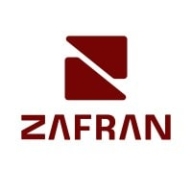


Check Point CloudGuard CNAPP and Microsoft Defender Vulnerability Management are competing in the cloud security and vulnerability management category. Microsoft Defender generally has an edge due to its extensive integrated features, offering a more comprehensive solution.
Features: Check Point CloudGuard CNAPP includes cloud-native application protection, integration capabilities, and threat prevention features. Microsoft Defender Vulnerability Management provides vulnerability scanning, threat intelligence, and integration with Microsoft security solutions. Microsoft Defender offers a more comprehensive suite of features, enhancing its overall value.
Room for Improvement: Check Point CloudGuard CNAPP could improve its support network, integration options, and threat detection precision. Microsoft Defender Vulnerability Management might enhance support for non-Microsoft environments, user interface simplicity, and cost-effectiveness for budget-conscious users.
Ease of Deployment and Customer Service: Microsoft Defender Vulnerability Management integrates seamlessly with the Microsoft ecosystem, offering straightforward deployment with efficient support from its established structure. Check Point CloudGuard CNAPP is easy to deploy, often praised for a customer-friendly approach, yet its support network is less extensive, impacting appeal for large ecosystems.
Pricing and ROI: Check Point CloudGuard CNAPP is seen as cost-effective, with competitive pricing and notable ROI, appealing to budget-prioritizing organizations. Microsoft Defender Vulnerability Management, while more expensive, is perceived as a worthwhile investment due to its superior features, offering a higher return on investment for enterprises seeking comprehensive security integration.
| Product | Market Share (%) |
|---|---|
| Check Point CloudGuard CNAPP | 1.4% |
| Microsoft Defender Vulnerability Management | 2.7% |
| Zafran Security | 1.0% |
| Other | 94.9% |



| Company Size | Count |
|---|---|
| Small Business | 54 |
| Midsize Enterprise | 17 |
| Large Enterprise | 57 |
| Company Size | Count |
|---|---|
| Small Business | 8 |
| Midsize Enterprise | 2 |
| Large Enterprise | 5 |
Zafran Security integrates with existing security tools to identify and mitigate vulnerabilities effectively, proving that most critical vulnerabilities are not exploitable, optimizing threat management.
Zafran Security introduces an innovative operating model for managing security threats and vulnerabilities. By leveraging the threat exposure management platform, it pinpoints and prioritizes exploitable vulnerabilities, reducing risk through immediate remediation. This platform enhances your hybrid cloud security by normalizing vulnerability signals and integrating specific IT context data, such as CVE runtime presence and internet asset reachability, into its analysis. No longer reliant on patch windows, Zafran Security allows you to manage risks actively.
What are the key features of Zafran Security?
What benefits can users expect from Zafran Security?
In industries where security is paramount, such as finance and healthcare, Zafran Security provides invaluable protection by ensuring that only exploitable vulnerabilities are addressed. It allows entities to maintain robust security measures while allocating resources efficiently, fitting seamlessly into existing security strategies.
Check Point CloudGuard CNAPP offers comprehensive cloud security with features like dynamic access control, asset protection, and compliance checks, tailored for organizations seeking enhanced governance across AWS, Azure, and GCP platforms.
Check Point CloudGuard CNAPP provides robust capabilities, including centralized firewall management, IAM scanning, and real-time visibility. Its strengths lie in predictive visualization, threat intelligence, and auto-remediation, making it a valuable tool for risk mitigation and compliance management. The platform's integration and responsiveness enhance cloud security, ensuring alignment with industry standards and effective threat protection.
What are the key features of Check Point CloudGuard CNAPP?Organizations in finance, healthcare, and retail frequently implement Check Point CloudGuard CNAPP for compliance and security across cloud environments. It assists with workload protection, threat detection, and regulatory obligation fulfillment, proving effective for securing applications and monitoring API interactions.
Microsoft Defender Vulnerability Management enables organizations to identify vulnerabilities, manage patches, and fortify threat detection. It offers endpoint assessments, cloud incident management, and dynamic security through Microsoft's Security Scorecard integration.
Organizations leverage Microsoft Defender Vulnerability Management for advanced threat detection and response. It provides robust tools for vulnerability assessment and cloud incident management, integrated with Microsoft's Security Scorecard to enhance dynamic security profiling. Key features include automatic patch deployment, security configuration management, and seamless integration with Microsoft platforms, benefiting both on-prem and cloud environments. Organizations can track vulnerabilities with severity-based reports, helping manage outdated software and minimizing threat exposure.
What are the key features of Microsoft Defender Vulnerability Management?In healthcare, Microsoft Defender Vulnerability Management helps manage compliance with health regulations, while in finance, it aids in securing sensitive data from cyber threats. Manufacturing sectors benefit from its patch management, keeping operational technology systems less vulnerable to disruptions.
We monitor all Vulnerability Management reviews to prevent fraudulent reviews and keep review quality high. We do not post reviews by company employees or direct competitors. We validate each review for authenticity via cross-reference with LinkedIn, and personal follow-up with the reviewer when necessary.